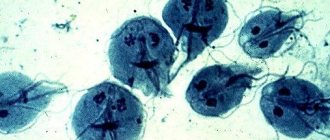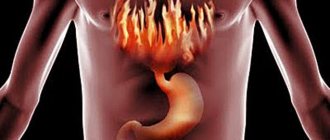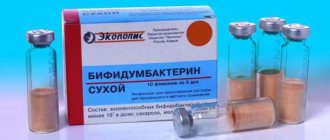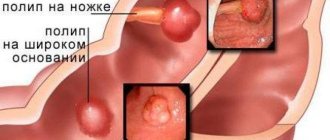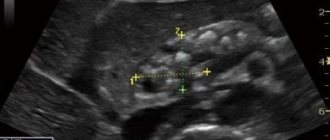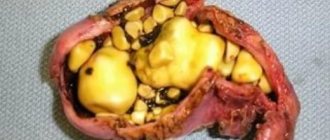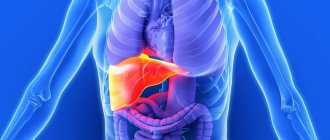What is giardiasis?
Giardiasis is an invasive disease caused by protozoan parasites and characterized by damage to the small intestine. The main manifestations of giardiasis are allergic and pathological neurological reactions.
The causative agent of giardiasis is the simplest flagellated microorganism – lamblia (Giardia). Modern science knows about 40 varieties of Giardia, but only Lamblia interstinalis parasitizes the human intestine.
This protozoan microorganism exists in the form of a cyst and in the form of vegetation. Vegetative lamblia has a pear-shaped shape, somewhat reminiscent of a human face with a tight smile. Giardia does not reach more than 24 microns in length and 12 microns in width, so they are visible only under a microscope.
On the ventral side of the parasite there is a suction disk, which is used to attach to the villi lining the human intestine. Giardia feeds on the entire surface of the body, absorbing the substances they need for life.
In the form of vegetation, Giardia moves very actively. Flagella help them in this; the parasite has 4 pairs of them. Outside the human body, vegetative forms are not capable of long-term existence and die within a few hours.
After the parasites penetrate the human intestine, Giardia begins to divide, forming a new vegetation and cyst. Cysts are released along with the patient’s stool. Unlike vegetations, cysts have good stability in the environment. They retain their viability without a human body for 18 days or more in water, and with sufficient humidity they live for about 4 days. Cysts do not respond to treatment with chlorine, but do not tolerate drought. Without sufficient moisture, the cysts die within a few hours.
Giardia leads an independent lifestyle, completely providing for its needs at the expense of the host’s body. Giardiasis is widespread. Most carriers of this protozoal infection live in Latin America, Africa and Central Asia. The causative agent of the disease was first discovered in human feces in 1684 by Antonia van Leeuwenhoek, and the scientist D. F. Lambl described the parasite in detail in 1859. This microorganism was named after him.
Animals, along with humans, are susceptible to giardiasis. This parasitic infestation is found in rabbits, dogs, cats, rodents, cattle and other mammals. A person most often becomes infected from another person who releases Giardia cysts into the external environment, but the possibility of infection from animals cannot be ruled out.
Already 9-22 days after the initial invasion, a person becomes dangerous to others, as he begins to release parasite cysts into the external environment with feces, ready for infection. Just 1 g of feces can contain 23 million parasitic cysts, but the average number of cysts per 1 g of feces is 1.8 million. Moreover, for infection to occur, from 1 to 10 cysts can enter the human gastrointestinal tract. Under such conditions, the risk of invasion will range from 10-30%.
Content:
Treatment with folk remedies
Giardia can also be removed from the body using traditional medicine recipes. Such medicines are not difficult to prepare at home. There are a large number of ways to eliminate parasites without medications.
Birch juice
You should take 0.5 liters of birch sap and put it on fire. Add 1 tbsp. l. dried immortelle flowers. Simmer over low heat for 15 minutes. At the end of the time, strain the product and cool slightly. Take 100 ml before meals 3 times a day.
Garlic and horseradish
You will need 1 head of peeled garlic and 25 g of horseradish. Grate the ingredients and pour in 0.5 liters of vodka or diluted alcohol. Leave to infuse for 10 days in a dark place. After the time has passed, strain the prepared medicine and take 1 tbsp. l. before each meal.
Rowan
It will take 1 tsp. rowan, which should be filled with 1 glass of boiling water. Leave to brew for 2 hours. Use the resulting product 3 times a day, 50 ml.
Birch leaves
To prepare this medicine you will need 2 tbsp. l. finely chopped birch leaves, which should be poured with 0.5 liters of boiling water. Let it cook for 10 minutes. After the time has passed, add 0.5 tsp. soda, stir and strain. Take the resulting decoction 1 glass daily.
Important to remember! Before using alternative medicine recipes, you must consult your doctor! He will evaluate the appropriateness of their use, as well as the effectiveness of such treatment, taking into account the individual characteristics of the course of the disease. Also, during the period of taking decoctions, it is necessary to regularly take tests for the presence of Giardia in the body.
Giardiasis statistics
Every year more than 140 thousand cases of giardiasis are registered in Russia. The number of adults from this figure is about 30%. The disease is dangerous primarily because it is asymptomatic, and the clinical signs that occur in an adult are not specific. Giardiasis is often hidden under the guise of biliary dyskinesia, chronic enteritis and other pathologies of the gastrointestinal tract.
The mechanism of transmission of parasitic infection is fecal-oral. Routes of transmission: through hands, through water, through food contaminated with parasite cysts. Some insects, in particular flies, can carry Giardia cysts.
The prevalence of giardiasis is explained by the high prevalence of parasite cysts in most environmental objects:
- There are from 4 to 30 cysts per 1 cubic meter of water in open reservoirs.
- For 1 liter of untreated wastewater, there are up to 1091 cysts.
- For 1 liter of treated wastewater that will be discharged into open water bodies, there are from 10 to 35 cysts.
- There are up to 112 cysts per 1 kg of soil in preschool educational institutions located in unsewered settlements (in 11-22% of all studied soils).
- In 6% of cases, cysts were found in washings from door handles in kindergartens, in 3% in washings from children’s hands, in 2% in washings from children’s potties and in 0.2% in washings from toys.
Cysts remain viable in water from 15 to 70 days; in feces they live from 2 hours to a day. If cysts end up in open waters, they can live for about 3 months at temperatures from 2 to 22 °C. In the sea, cysts retain the ability to invade for 47 days.
However, cysts are not resistant to heat and when boiled they die instantly. As for food products, parasite cysts can remain viable on fruits for 6 hours; in dairy products they can live up to 12 days, and sometimes up to 112 days.
Outbreaks of giardiasis have been reported in various countries around the world due to drinking untreated water that has not been properly treated at water works. For example, a similar situation was observed in America, Egypt, and Sweden.
In most preschool institutions, children become infected through dirty hands. The source of the spread of giardiasis is other children, as well as staff.
The possibility of infection with parasites through food should not be ruled out. Cysts can get onto prepared food products from the hands of those people who have been in contact with them. Or infection occurs by eating poorly processed fruits, vegetables, herbs, etc.
The causative agent of giardiasis
What it is? Giardia is a single-celled parasite that, under favorable conditions, is highly active. The causative agent of giardiasis can exist in two forms: trophozoids and cysts. Trophozoids actively reproduce, causing negative symptoms. Cysts are round formations that protect unformed trophozoids from aggressive factors.
The main method of infection with giardiasis is fecal-oral. Cysts with human or animal feces enter the external environment. They are able to remain viable in water bodies for several months. The causative agents of giardiasis can withstand freezing and temperature increases up to 50°C. They die when boiled. Infection with giardiasis is possible by drinking tap water or washing fruits and vegetables with unboiled water. In the summer, you can become infected by swimming in a body of water contaminated with Giardia cysts.
The contact and household route of infection is considered very rare. But, nevertheless, it is possible if hygiene rules are not followed at home.
Causes of giardiasis infection
The causes of giardiasis infection are infestations by an intestinal parasite called Lamblia intestinalis.
Giardia multiplies in the human small intestine, in those places where they accumulate the most. The method of reproduction is continuous pair division of vegetative individuals. The speed of this process is very high and averages 20 minutes; as a result, the intestines are populated with parasites quite quickly.
The activity of Giardia and the rate of their reproduction directly depends on the state of the human digestive system. The number of individuals decreases sharply during fasting and when the patient eats a sufficient amount of protein food. When carbohydrate foods enter the body, on the contrary, there is insufficient secretion of bile into the intestinal lumen, which stimulates the growth and reproduction of parasites.
The more active the processes of parietal digestion in the intestine, the faster Giardia begins to divide, which explains the high prevalence of infection among children compared to the adult population. Favorable conditions for the existence of the parasite in the intestines are low acidity of gastric juice.
The source of infection is always a sick person. Moreover, he himself may be a carrier of Giardia, but will not experience symptoms of the disease at all. A person becomes contagious approximately 8-12 days after infection. The incubation period in some cases may be shorter, especially with massive Giardia infection.
Cysts are released into the external environment in waves. The pause between this process can range from 1 to 17 days. If a person was infected once, and subsequent reinfection does not occur, then he will remain infectious for 6 months.
From the point of view of maximum contagiousness, the most dangerous is the patient whose symptoms of giardiasis have subsided. During this period, intestinal motility is normalized, and favorable conditions are created for the proliferation of parasites.
One gram of feces can contain about 1.8 million cysts capable of invasion. And in order for infection to occur, it is enough to swallow only 10 cysts.
The mechanism of transmission of Giardia is fecal-oral. Ways of spread of infection: food, household contact and water.
Most often, massive outbreaks of infection result from the waterborne spread of giardiasis. Infection is possible while visiting the pool or when swimming in open water. Giardiasis can be transmitted by eating food contaminated with cysts of the parasite. There are known cases of infection during sexual contact between homosexual men.
There is a high risk of transmission of giardiasis under the following conditions:
- Lack of personal hygiene. First of all, this concerns poor quality and untimely washing of hands after visiting public places, the toilet and before eating.
- Poor quality processing of food products that are eaten raw.
- Drinking unboiled water, especially from open natural sources. Giardia can be present in any water, including spring water.
- Poor sanitary living conditions, presence of insects in the house. Of particular danger in this regard are flies and cockroaches, which spread the infection.
- It is possible to become infected with giardiasis from infested animals: dogs, guinea pigs, cats, etc.
Adults in the following professions are more susceptible to infection:
- Employees of educational institutions (kindergartens, schools).
- Medical workers (laboratory technicians).
- Vacuum trucks.
Risk factors for the development of giardiasis in adults:
- A large amount of carbohydrate foods in the diet.
- Insufficient consumption of protein foods and foods with plant fiber (vegetables, fruits, cereals).
- Reduced stomach acidity.
- Impaired immune function.
- Long-term treatment with antibacterial drugs, which leads to bacterial overgrowth in the intestines. Such an environment is favorable for the existence of Giardia.
- Addiction.
In the Russian Federation, the disease is most often registered in the spring (April and May), as well as in the summer. The fewest cases of giardiasis are observed in November and October.
For many years, the danger of giardiasis was significantly underestimated. Modern scientists have no doubt that parasites pose a threat to human health. Therefore, Giardia in adults needs to be diagnosed and treated in a timely manner.
The entry point for parasites is the upper parts of the small intestine. There, mature cysts lose their protective shell and become vegetative individuals. One cyst produces 2 trophosites. With the help of flagella, they move through the intestinal mucosa, finding comfortable conditions for their existence.
After attachment to the intestinal villi, vegetative forms begin division. Colonization of the organ occurs very quickly. Just one square centimeter of the intestine can contain up to 1 ml of individuals. The maximum number of Giardia occurs in the upper part of the small intestine. It is here that parasites have optimal conditions for accessing the spaces between the villi, from which they absorb carbohydrates, fats, proteins, mineral salts and other nutrients. In later periods, Giardia descends into the middle and terminal sections of the small intestine.
Those vegetative forms of Giardia that are not attached to the villi descend into the large intestine, where they become cysts. After which the cysts absorb flagella and become covered with a protective shell. This process is facilitated as much as possible under the condition of normal intestinal motility. If it is accelerated, which is observed with diarrhea, the vegetative forms of Giardia do not have enough time to form full-fledged cysts, and they emerge into the external environment insufficiently protected. As was said, such vegetations die very quickly outside the human body.
For a long time, there was a belief that Giardia can parasitize the bile ducts. However, it has been proven that bile in high concentrations is destructive for these parasites. They lose their vitality in it in a few seconds.
Factors that contribute to massive outbreaks of giardiasis among the population are:
- Fecal pollution of the environment;
- High crowding;
- Low level of development of sanitary and hygienic skills among the population;
- Insufficient or poor-quality purification of drinking water before it enters the water supply system.
Naturally, the risks of invasion for an adult increase if one or more children under the age of 10 live in the house.
Diagnosis of giardiasis
Considering the nonspecificity of manifestations and their diversity, to confirm giardiasis it is necessary to carry out laboratory and instrumental diagnostic methods. There are certain indications for laboratory tests to exclude giardiasis:
- persistent increase in eosinophils in the blood;
- neurocirculatory dysfunction;
- chronic diseases of the digestive tract;
- allergic reactions;
- Traveler's diarrhea.
The general blood test remains almost unchanged in this disease. Sometimes it is possible to detect eosinophilia, and with prolonged and severe course of the disease - anemia. Leukocytosis with a shift to the left may indicate the addition of a secondary bacterial infection.
During scatological examination, neutral fats, undigested muscle structures, fiber, and lamblia are often found in feces.
A biochemical blood test may reveal slight hypoproteinemia (decreased protein levels in the blood). It is surprising that even with severe giardiasis with damage to the liver and biliary tract, liver tests are normal.
It is imperative to conduct a parasitological study. To do this, duodenal contents and feces are usually taken from the patient. Only vegetative forms of Giardia are found in the duodenal contents, only cysts are found in formed stools, and both stages of development are found in watery feces. To identify the parasite, feces are examined under a light microscope, after staining the preparations with Lugol's solution.
Since vegetative forms are extremely unstable in the external environment, microscopy must be performed quickly, 30 minutes after receiving the material from the patient. Or you can use special preservative media (Barrow's, Safaralieva's media) in order to preserve the protozoa in excrement longer. A fluorescent microscope helps to better detect Giardia. Due to a certain cyclical nature of the development of Giardia, patients with a chronic course of the disease are recommended to repeat a stool test every 4-5 weeks.
When performing duodenal intubation, Giardia is found in large quantities in portions of bile B and C. Also, this method allows you to perform a biopsy (i.e., take a piece of tissue from the small intestinal mucosa). Microscopic examination of the biopsy will reveal parasites.
Of no small importance in diagnosis is a blood test for the presence of antibodies to Giardia. Among the methods that are used are the indirect immunofluorescence reaction (IRIF), an enzyme-linked immunosorbent assay, during which antibodies of class M or G are detected (M antibodies indicate acute inflammation, and G antibodies indicate a chronic course or an early history of the disease). The diagnostic antibody titer, which confirms the presence of Giardia in the body, is 1:32.
The serological research method also makes it possible to detect Giardia antigens in feces. This is a more informative way to identify the parasite. Especially when using a special Prospect Giardia test system, which allows you to find the GSA-65 antigen, unique only to Giardia, in feces.
The PCR (polymerase chain reaction) method, which allows the detection of parasite DNA in patient materials, is also effective for identifying protozoan parasites. But more often this method is used for scientific work.
Recently, the enterotest or nylon thread test has been actively used. The principle of this method is as follows: the patient swallows a gelatin capsule containing a nylon thread. The capsule enters the small intestine, dissolves there, and parasites attach to the released thread. The thread is strong, so it is not digested, but comes out with feces. Then this thread is examined for the presence of lamblia on it.
Is Giardia transmitted?
- Is Giardia transmitted from person to person? Giardia is transmitted from person to person.
- Is Giardia transmitted through kissing or saliva? Transmission of Giardia through a kiss is theoretically possible, provided that parasite cysts are present in the person’s saliva during the kiss.
- Is Giardia transmitted from cats to humans? Giardia can be transmitted from cats to humans.
- Can Giardia be seen in feces? It is impossible to see Giardia in feces on your own, since their size is very small. Therefore, parasites in feces can only be visualized under a microscope.
Acute giardiasis
The acute form of giardiasis always manifests itself with quite vivid symptoms from the gastrointestinal tract in the form of swelling and aching pain. Colic often occurs.
Symptoms of acute giardiasis
- fatigue and increased irritability;
- sudden intensive weight loss;
- frequent constipation;
- diarrhea;
- stomach pain that occurs during digestion;
- extensive allergic manifestations in the form of eczema.
Also, acute giardiasis causes persistent disorders of the psycho-vegetative system, as a result of which the patient often displays causeless aggression.
Symptoms of giardiasis
Symptoms of giardiasis are very often absent altogether. An asymptomatic course of the disease is observed in 65% of patients. If the clinical picture manifests itself clearly, then most often this is due to either massive invasion, or disruption of the human immune system, or the entry into the body of certain strains of infection that are highly virulent. For example, in people with HIV, the disease is much more severe than in healthy patients. Periods of remission are followed by frequent periods of exacerbation.
The following classification of giardiasis is considered to be the most complete:
- Asymptomatic carriage of giardiasis
- Severe symptoms of giardiasis. Severe symptoms of the disease include:
- Intestinal damage with enteritis, enterocolitis, duodenitis and duodenal dyskinesia (intestinal form of the disease).
- Hepatobiliary form in which the symptoms of cholecystitis and biliary dyskinesia come to the fore.
- Giardiasis as a concomitant disease.
Based on a study of the symptoms of giardiasis in people of different age groups, Zalipaeva T.L. identified the following main syndromes of the disease:
- Dyspeptic syndrome, which is the leading one and is present in the clinical picture of 81.5% of all patients.
- Pain syndrome, which is characteristic of 76.9% of all infected people.
- Astheno-neurotic syndrome with increased fatigue, irritability and headaches. Similar symptoms are observed in 64.8% of patients.
- Allergic reactions of the body. Most often, patients experience atopic dermatitis. This syndrome occurs in 15.7% of cases.
It is noted that similar syndromes may be present in any of the listed clinical forms of giardiasis. As for laboratory data, with giardiasis, 31.5% of patients experience an increase in the number of eosinophils by 5-7%.
Symptoms of giardiasis in the acute stage
The acute stage of giardiasis is characterized by the following symptoms:
- Nausea, lack of appetite, frequent belching.
- Bloating, flatulence, rumbling in the intestines, excessive gas production.
- Loss of body weight.
- Painful sensations occur in the area of the right hypochondrium and in the peri-umbilical zone. At the same time, every second patient reports pain in the navel area, and about 15% of people report pain in the right hypochondrium. Painful sensations are very often associated with food intake, so they are not associated with giardiasis.
- A bitter or sour taste appears in the mouth.
- Diarrhea may develop. In this case, bowel movements become more frequent and can occur from 3 to 5 times a day. If at the beginning of the acute period the stool is liquid and watery, then later it thickens and becomes greasy.
- Salivation increases.
- There is rapid fatigue and unexplained weakness.
- Performance deteriorates.
- Skin rashes appear.
- Avitaminosis. Its symptoms boil down to increased brittleness of nails, hair loss, peeling of the skin, etc.
The acute period lasts for five days, but can sometimes last for a week. If a person has an immunodeficiency, then the acute period of giardiasis is usually longer, and all of the listed symptoms are fully manifested.
Sometimes in the acute phase symptoms of biliary dyskinesia occur. If in children with giardiasis the body temperature rises and symptoms of intoxication increase, then for adult patients such a clinical picture is not typical.
After a week, giardiasis either goes away on its own or becomes chronic.
Symptoms of giardiasis in the chronic stage
Symptoms indicating a chronic form of giardiasis in adults:
- Disorders of the digestive system. The patient's stool becomes unstable, frequent constipation is replaced by equally frequent diarrhea. Appetite remains reduced, and bloating and rumbling in the intestines are periodically disturbing.
- The general well-being of a person suffers. Often headaches occur, excessive drowsiness and irritability appear. This condition leads to deterioration in working ability.
- Skin color deteriorates and mild jaundice may develop. First of all, the neck, face, axillary folds, and abdomen acquire a jaundiced tint.
- Skin rashes begin to bother the patient more and more often, even if the person did not suffer from allergies before. Dermatitis or urticaria may occur. Quincke's edema in adults against the background of giardiasis occurs extremely rarely; asthmatic bronchitis or bronchial asthma develops more often. The main features of allergies against the background of giardiasis are: long-term course, lack of response to taking antihistamines, frequent relapses.
- Urticaria is especially difficult in adults against the background of giardiasis, disrupting the patient’s quality of life. Moreover, it occurs without any background errors in nutrition, without taking medications, etc. Very often, urticaria is accompanied by symptoms of blepharitis.
- Chronic giardiasis is characterized by keratosis pilaris with the appearance of pinpoint swellings on the skin. The skin of the shoulders is predominantly affected. It becomes covered with a rough crust or white round plaques, prone to increased peeling.
- Giardiasis is associated with xerosis in which the patient's heels peel, especially in the cold season.
- Isolated damage to the palms and feet is possible, when the skin begins to peel off from the tips of the phalanges. The fingers resemble those of an old man. This process, as a rule, does not reach the palms.
- The mucous membrane of the oral cavity suffers. A person often develops aphthous stomatitis, jams appear in the corners of the mouth, and the border of the lips becomes inflamed.
- Hair becomes thinner, becomes brittle, and loses its natural shine.
- The patient continues to lose weight.
If Giardia parasitizes an adult for a long time, then signs of immunosuppression and symptoms of intoxication will be observed. At the same time, the lymph nodes periodically become inflamed, the tonsils become enlarged, and the body temperature rises to subfebrile levels.
Another indirect sign of giardiasis in adults is intolerance to whole cow's milk, since these parasites infect the enterocytes responsible for the hydrolysis of carbohydrate components of food. This also explains the increased gas formation in the intestines.
Symptoms of Giardia in adults and children
Considering the pathogenesis of the disease, it becomes obvious that most of the clinical manifestations of the disease will be accentuated and based on digestive disorders. However, there are often hidden forms of giardiasis, when a person learns about it only after testing feces for helminth eggs. Sometimes parasites can perform rather weak activity without causing objective symptoms.
In all other cases, you need to remember that there are several main forms of the disease, which will differ in clinical picture.
The intestinal variant of the disease is marked by predominant damage to the mucous membrane of the digestive tube. It can be called classic giardiasis, which exactly corresponds to the pathological process and the nature of the damage to the body.
Traditional symptoms in this case are:
- Loss of appetite.
- Nausea.
- Loss of body weight. Depending on the number of microorganisms, the pace of this process may differ.
- Frequent occurrence of pulling or other types of pain in the navel area.
- Progression of flatulence. Due to the inadequate process of absorption of nutrients, some of them begin to ferment, releasing a fairly large amount of gas, which leads to bloating.
- The occurrence of defecation disorders such as diarrhea.
All of the above symptoms and consequences of lamblia in adults and children develop in approximately the same way. It is only important to note that the younger a person is, the easier it is for parasites to attack him. Although such a correlation is not always true, especially in cases of acquired immune deficiency.
Consequences of giardiasis
The consequences of giardiasis occur with a long course of the disease. First of all, the human immune system suffers, which provokes constant viral and bacterial diseases.
Secondly, the risks of developing chronic diseases of the digestive system increase, which cannot be eliminated even after giardiasis is cured. The development of acute pancreatitis, cholecystitis, gastroduodenitis, ulcerative lesions of the stomach and intestines is possible.
Thirdly, with parasitic infestation, the patient suffers from allergic reactions, which can result in bronchial asthma. Its symptoms can also persist throughout life, even if giardiasis is cured.
How to treat chronic and acute types of illness?
Compliance with a therapeutic diet is very important during the preparatory and all subsequent stages of therapy.
Before carrying out the main therapy for giardiasis, the body is prepared. Preparation includes following a therapeutic diet, which creates unacceptable conditions for the life of parasites in the stomach and intestines. The main treatment for giardiasis in adults involves taking deworming tablets. Therapy is carried out in stages and lasts about 20 days. To enhance the effect of medications, treatment with anthelmintic folk remedies is recommended. Among them, medicinal decoctions against Giardia, tinctures, and cleansing enemas are very popular among people.
Stages of drug treatment
First stage
Treatment of giardiasis, whether chronic or acute, is aimed at strengthening the immune system, improving the functioning of internal organs and systems, and eliminating unpleasant symptoms. For these purposes, choleretic and antihistamines, immunostimulants, and enterosorbents are used. Drug treatment is accompanied by diet, internal administration of herbal decoctions and tinctures.
Second phase
For treatment, the same medications are used as in the first stage. Only remedies have been added that allow you to recover directly from Giardia itself. Drugs often used in medical practice that can treat Giardia cysts:
- the drug "Metronidazole";
- tablets "Trichopol";
- anti-giardiasis medicine "Ornidazole".
Third stage
At the final stage of treatment, it is necessary to restore the intestinal microflora.
The final stage of treatment of giardiasis. Continue to follow a diet that improves intestinal motility. The doctor prescribes vitamin complexes, probiotics and prebiotics (to restore intestinal microflora). The average duration of treatment is 3 weeks. In advanced cases of giardiasis, you will have to poison the giardia in the hospital and be treated under the strict supervision of a doctor.
Diet food
Following a diet is the key to successful treatment in the fight against parasites. It will help weaken the parasites before removing them from the body, and prevent their reappearance. Therapeutic diet is important at all stages of therapy. It involves avoiding foods that are loved by all parasitic worms, including:
- eggs;
- fatty meats and fish;
- fried food;
- canned and smoked foods;
- confectionery;
- fresh bakery;
- spicy and salty dishes.
It is recommended to give preference to products that have anthelmintic effect:
- cereal porridge with water;
- dairy products;
- garlic and onion;
- sour berries and fruits;
- honey;
- spices - ginger, cinnamon, cloves.
Treatment with folk remedies
Traditional methods only help get rid of the symptoms of the disease.
Folk remedies are used as therapeutic methods that accompany taking medications. They are prepared from improvised materials and are convenient for use at home. The most common recipes of traditional healers used to combat helminthic infestations:
- Garlic is a folk remedy for Giardia and other parasites. Take 1 head of garlic, peel it, and eat all the garlic cloves. Wash down the garlic with sauerkraut brine. After 2 hours, drink a laxative. The disease is successfully treated with medications in combination with garlic.
- Tansy decoction. Preparing the decoction is very simple, just pour 2 tbsp. l. herbs 1 liter of boiling water. Drink during the day. Such an effective remedy will help remove harmful substances released by parasites from the intestines during their life.
Diagnostics
Diagnosis of Giardia in adults must be carried out according to the following indications:
- Diarrhea, which is persistent and does not find viral, autoimmune or bacterial confirmation.
- Allergic and allergy-like diseases of the respiratory tract (bronchial asthma, obstructive bronchitis) and skin (urticaria, eczema, dermatitis, etc.).
- Increase in eosinophils in the blood.
- Prolonged increase in body temperature to subfebrile levels.
- Having confirmed contact with an infected person.
Visual markers of patients with giardiasis are: dry skin, soreness of the mesogastrium, bloating, coated tongue, possible enlargement of the liver.
Modern diagnosis of Giardia in adults includes the following set of possible measures:
- Microscopic examination of stool.
- PCR stool.
- Stool ELISA using rapid tests.
- PCR of duodenal contents of the duodenum.
- Blood ELISA for giardiasis.
The basic diagnostic method is microscopic examination of stool. It must be carried out at least 3 times, especially if there is a suspicion of the presence of parasites in the human body. Giardia cysts are most often found in feces.
For the result to be as reliable as possible, the following conditions must be met:
- On the eve of the test, it is advisable to avoid eating rough food, mushrooms and liver, so as not to complicate the visualization of parasites;
- Do not use an enema to collect biomaterial;
- Stop taking sorbents and antibiotics, or wait 2 weeks after the last dose of the drug;
- Feces are collected in a sterile container;
- The stool must be fresh and delivered to the laboratory within an hour.
Additional methods for diagnosing giardiasis in adults can include studies such as: general blood and urine analysis, blood biochemistry, coprogram and stool culture for microflora, test for lactase deficiency, FGDS, etc.
Prevention of giardiasis
The first thing you need to do in order to protect yourself from giardiasis is to review your menu. Your recipes should not contain poorly processed foods. Wash fruits and vegetables thoroughly, preferably heat-treating them. Giardia cannot be found in meat, but this does not mean that steaks should not be thoroughly fried. Inactive forms of multicellular parasites often appear in them due to infection of livestock.
The life cycle of Giardia allows it to enter the human body even with poorly purified water. Therefore, try to drink only purchased water, or purify it using a filter. In addition, do not forget to undergo regular examinations with a therapist. Preventive consultations will allow you to notice the problem in time and quickly eliminate it. Monitor your health and be healthy!
Treatment of giardiasis in adults
Treatment of Giardia in adults is carried out by an infectious disease specialist.
Before deciding on therapy, the doctor must take into account such aspects as:
- The severity of the symptoms of the disease;
- Duration of presence of Giardia in the intestines;
- Presence of concomitant diseases.
It is equally important to try to determine the source of the invasion in order to prevent reinfection. Treatment should not be started by taking antiprotozoal drugs, as this will exacerbate the symptoms of the disease and may provoke a reactive response from the body.
Therefore, treatment of Giardia in adults is carried out in stages:
- Preparatory stage before treatment of giardiasis. At the preparatory stage, it is necessary to try to mechanically remove the maximum amount of Giardia from the intestines, as well as remove intoxication from the body. During this time, the patient must adhere to a dietary diet.
To do this, the patient must follow the following recommendations:
- Completely exclude sweets and carbohydrates from the menu, which are quickly absorbed;
- Eat foods rich in fiber;
- Eat protein foods;
- Avoid whole milk and limit fat intake;
- Eat according to a schedule, switch to fractional meals (5-6 times a day);
- Drink more fluids, giving preference to sour fruit drinks and choleretic decoctions.
- The use of antiparasitic drugs against Giardia. The second stage of antiparasitic therapy takes 5-10 days. All medications are prescribed by the attending physician, since almost all drugs have contraindications and side effects.
How to treat Giardia in adults - list of medications:
- Metronidazole (Trichopol) - dosage in adults is 0.4 g three times a day, vomiting, nausea, headache, sleep disturbances are possible.
- Albendazole - 0.4 g once for 5 days, possible development of liver failure, nausea and vomiting, hyperthermia.
- Fazizhin – one tablet 4 times a day for 2 days.
- Macmiror - 15 mg per kg of body weight, taken twice a day after meals for a week, possible manifestations of diarrhea, gastralgia, skin rash, nausea and bitterness in the mouth.
- Furazolidone is rarely used, since the drug is ineffective against modern strains of parasites.
Supplementing the diet is the intake of enterosorbents, choleretic drugs, antihistamines and digestive enzymes. In this way, conditions will be created in the intestines that are unfavorable for the proliferation of parasites and the rate of their division will be significantly reduced.
Drugs and dosages for the treatment of children are selected with special care, trying to minimize the toxic effect of drugs.
How to treat Giardia in children - medications:
- Flamin - 1/3 or 1/2 tablet three times a day, the course of treatment is designed for 10 days.
- Macmiror – used from 2 years of age at 15 mg per kg of child’s body weight, no more than 0.4 g in total. The course of treatment with 2 doses takes from 7 to 10 days.
- Intetrix - recommended for children from one year old, the therapeutic dose is ?-1-1? capsules three times a day.
Simultaneously with taking antiparasitic drugs, both adults and children take a course of antihistamines, enzymes and sorbents.
As a rule, the prognosis for giardiasis in adults is quite favorable. If the patient strictly follows all the doctor’s instructions, recovery is observed in 92-95% of cases. However, reinfection cannot be ruled out, so the patient should remain under clinical observation for another 3-6 months. During this time, it must be examined at least 2 times.
Second stage of treatment
This is the main antiparasitic therapy. The patient is prescribed a course of drugs whose action is aimed at destroying the protozoa. For this purpose, derivative drugs Furazolidone, Metronidazole, Ornidazole, Tinidazole, Albendazole are used. The doctor will select the necessary medication on an individual basis.
In this case, the specialist will take into account possible contraindications, the patient’s condition, and determine the duration of administration and dosage of the drug. Along with medications for parasites, enterosorbents and antihistamines are continued at this stage.
Treatment regimens for giardiasis
Treatment regimens for giardiasis are implemented using antiparasitic drugs, including:
- Tinidazole (Tinogin, Ametin, Fazizhin). It will take 1-2 days to take the selected drug. The effectiveness of treatment reaches 80%.
- Tiberal (Ornidazole). The drug can be taken in different regimens: one day, three days, five days and ten days. The effect even with one-day use reaches 92%.
- The drug Macmiror "Poli industria chimica". The effectiveness of this drug reaches 96.8% after a week of use.
After completion of treatment, a control test for giardiasis will be required. Another parasitological examination is carried out after 30 days.
Prevention
Preventive recommendations to avoid infection with giardiasis:
- Wash your hands thoroughly before eating, after using the toilet and after contact with animals.
- Wash fruits and berries before eating.
- Do not drink water from open sources.
- Give up the bad habit of biting your nails, as there may be parasite eggs under your nails.
- Change your underwear daily.
- Iron bed linen with a hot iron on both sides.
- Carry out anthelmintic prophylaxis for pets once every three months.
- To prevent helminthic infestations, a person needs to take anthelmintic drugs twice a year or use folk remedies for helminths.
Prevention of giardiasis is very important, so it is necessary to strictly follow the recommendations that will prevent infection. A person should always closely monitor the functioning of the gastrointestinal tract. In case of the slightest disturbances that do not last in isolated cases, you should consult a doctor and undergo examination for parasites. Timely detection and treatment of Giardia will prevent negative health consequences.
Prevention of Giardia in adults
Prevention of Giardia in adults comes down to the following measures:
- Timely detection of cases of invasion with subsequent high-quality treatment of patients with giardiasis.
- Following strict hygiene rules with regular hand washing.
- Use boiled or bottled water for drinking.
- Preventing fecal matter from entering the environment.
- Compliance with sanitary and hygienic measures in food and water supply institutions.
- Regular examination of people at risk for giardiasis.
- Conducting sanitary education work among the population by local authorities.
There is no vaccine for giardiasis, and the immunity that is developed after an illness is not very stable. Therefore, the risk of reinvasion remains high.
Diet for giardiasis
In the fight against the disease, it is necessary to exclude the following foods from the diet: whole milk, pasta, flour products, sweets, baked goods and sausages. The only cereals you can eat are buckwheat, corn and rice.
Milk must be replaced with yogurt or kefir. It is very useful for giardiasis to drink lingonberry or cranberry juice. Meat should be lean and boiled, and fruits and vegetables can be eaten in any quantity. It is not recommended to use mayonnaise as a dressing; it is better to use vegetable oil.
It is very important to adhere to a separate diet and ensure that the body receives all the necessary nutrients and microelements.
How does giardiasis occur during pregnancy?
A pregnant woman is not immune from various infections, and is most often included in the risk group, since her immune system is weakened. This increases the risk of infection with viruses, pathogenic bacteria and parasites, including worms.
If you take care of hygiene and prevention, you can avoid infection, but there is no 100% guarantee. How giardiasis occurs during pregnancy and what complications you should know about. First of all, we are talking not only about the woman’s health, but also about possible problems in the baby’s condition.
Consequences of giardiasis for a pregnant woman. The development of diseases of the small intestine, which can lead to severe forms of allergies and digestive disorders.
During gestation, such an action weakens the immune system, and the body cannot fully resist foreign agents. Giardiasis worsens the course of pregnancy (in addition to toxicosis, signs of helminthic infestation appear, reminiscent of the symptoms of severe intoxication).
Can helminthic infestation be transmitted to an unborn baby?
Experts answer positively, there are risks of such an outcome. But you can reduce the likelihood of your child becoming infected if you seek medical help at the first signs of illness, take care of careful personal hygiene and follow the prescribed treatment regimen.
For a child, the toxins released during the life of worms are also quite dangerous (they slow down the development of the fetus and cause various, including irreversible, processes). After all, Giardia is an aggressive parasite. Absorb useful substances intended for the normal functioning of the body.
And the more there are, the fewer vitamins and nutritional components enter the body.
A deficiency of important elements negatively affects the development of the child (the baby does not receive enough oxygen, and with it, nutrition, which provokes the development of hypoxia).
With constant, chronic oxygen starvation, there is a high risk of giving birth to a weak baby (such babies are smaller than other children, their height and weight are 10-30% behind the norm; it is more difficult for them to adapt to the environment, and their innate reflexes are underdeveloped).
The baby's thermoregulation is impaired, and the weak immune system is not able to resist external infections. Lack of oxygen and nutrition causes the development of severe intrauterine pathologies.
Treatment of helminthic infestation is complicated by the fact that most medications and folk remedies are completely contraindicated at this stage of a woman’s life. Therefore, therapy for giardiasis is postponed until the patient gives birth, or transferred to the II-III trimesters. In any case, consultation with a doctor and strict monitoring of the condition of the woman and fetus are extremely important.
